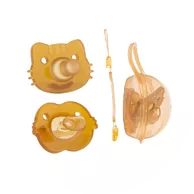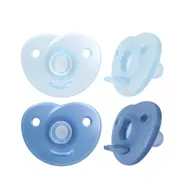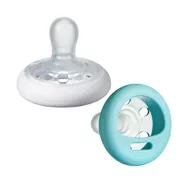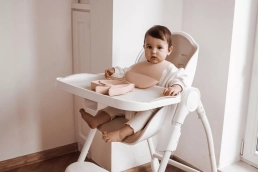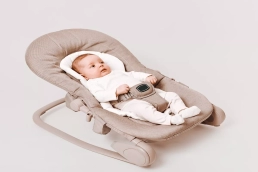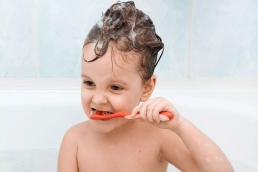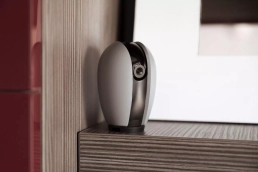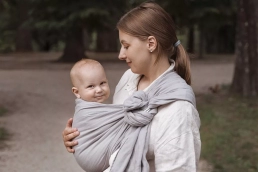In the Philippines, baby pacifiers are a common item for new parents. These small, soothing devices can provide comfort to infants and help ease the challenges of early parenthood. In this comprehensive guide, we will explore everything you need to know about baby pacifiers in the Philippines.
Bringing a new baby into the world is an exciting journey filled with joy and new experiences. It also comes with its fair share of challenges, especially for first-time parents. One such challenge is soothing a fussy baby. This is where baby pacifiers come to the rescue. In this guide, we will delve into the world of baby pacifiers in the Philippines, covering their benefits, safety, and where you can find them.
Table of Contents
ToggleThe Origins of Baby Pacifiers
Baby pacifiers, also known as soothers or dummies, have a long and fascinating history. These small devices, designed to comfort and soothe infants, have evolved over centuries to become an essential part of baby care today.
Ancient Beginnings
The concept of using objects to soothe babies dates back thousands of years. In ancient civilizations, such as the Egyptians and Greeks, people used materials like honey-soaked rags, wooden objects, or even coral to pacify babies. These early pacifiers served the purpose of keeping babies calm and content.
The Evolution of Materials
As time progressed, the materials used for pacifiers evolved. In the 17th and 18th centuries, European countries began crafting pacifiers from porcelain, ivory, and silver. These materials were not only aesthetically pleasing but also considered beneficial for teething babies.
Rubber and Latex
One of the most significant advancements in pacifier history occurred in the 19th century when rubber and latex were introduced. These materials provided a softer and more flexible alternative to the earlier rigid materials, making pacifiers more comfortable for babies to suck on.
Modern Pacifiers
The 20th century saw further innovation in pacifier design. Latex was eventually replaced by silicone, which is both durable and easy to clean. Modern pacifiers feature a bulbous end for the baby to suck on and a shield or guard to prevent the pacifier from being swallowed or lodged in the baby’s mouth.
Review of the Best Baby Pacifiers in the Philippines
1. Animal Baby Feeding Infant Wubbanub Silicone Baby Pacifier
![]()
The WubbaNub Silicone Baby Pacifier stands out as a special combination of a soft toy and a pacifier, created to provide comfort and calmness to infants. Crafted entirely from 100% silicone, it boasts durability and easy maintenance. Its one-piece design ensures no hidden spots for germs to lurk. WubbaNub is renowned for prioritizing safety and comes highly recommended for babies aged 0-6 months. This pacifier is free from latex, BPA, PVC, and phthalates, guaranteeing it’s safe for your baby.
Pros:
- Easy for babies to hold onto due to its thoughtful design
- Its unique shape keeps it close to the baby’s mouth
- Trusted and favored by healthcare professionals
- Suitable for supervised naps and soothing when the baby is awake
Cons:
- Not suitable for babies with teeth or those going through the teething phase
- Not very portable
- Currently lacks a next-stage pacifier for older infants
2. Baby Pro Nano 3 In 1 Baby Pacifier
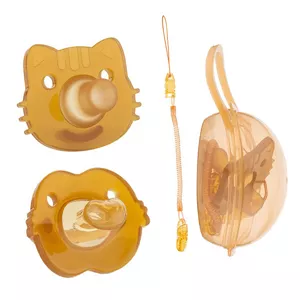
Shopee’s Best Baby Pacifier Choice
The Baby Pro Nano 3 In 1 Baby Pacifier offers versatility and convenience for parents. This pacifier serves as a pacifier, teether, and toothbrush, combining multiple functions in a single product.
Pros:
- Simple to clean
- Features a flexible and breathable design
- With an ergonomic shape that comfortably fits around your baby’s face, nose, and chin
Cons:
- Nipple is harder and firmer when compared to other alternatives
- The pacifier has a shorter nipple
3. Chicco Physio Soft Silicone Baby Pacifier
![]()
Best Breath Support Baby Pacifier
The Chicco Physio Soft Silicone Baby Pacifier, also known as the PhysioForma pacifier, is specially designed to support your baby’s natural breathing and tongue placement. This pacifier features a unique nipple shape with tiny ridges and an inclined design to guide proper tongue positioning, assist in the development of the palate and teeth, and ensure an open airway.
Pros:
- Supports your baby’s natural breathing and tongue positioning
- Helps maintain an open airway and encourages healthy oral development
- Crafted from 100% soft silicone, making it BPA and latex free
- Simple to clean and sterilize
- Includes ventilation holes to prevent the buildup of saliva
Cons:
- Some babies may not prefer the shape or feel of the PhysioForma pacifier
- You might need to replace the pacifier as your baby grows
4. Coral Babies Silicone Orthodontic Mustache Baby Pacifier
![]()
The Coral Babies Silicone Orthodontic Mustache Baby Pacifier offers a fun and secure choice for parents seeking a pacifier that can comfort their babies while also giving them an adorable appearance.
Pros:
- Crafted from safe, BPA-free silicone
- Can be easily cleaned in the dishwasher and sterilized
- Features a gentle and flexible teething surface
- Equipped with an orthodontic nipple that flexes upward
Cons:
- Some parents prefer entirely natural pacifiers
5. Dr. Brown’s Advantage Baby Pacifier Stage 1
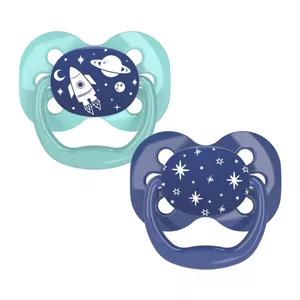
Best Bottle-Like Baby Pacifier
Dr. Brown’s Advantage Baby Pacifier Stage 1 offers a fully symmetrical design, making it convenient for your little one. Its bulb is reversible, allowing your baby to use it right-side up or upside down as needed. Crafted with a rounded 100% silicone bulb, this pacifier is tailored to meet your baby’s suckling needs and reduce the risk of skin irritation due to its unique shield design. It’s suitable for infants aged 0-6 months.
Pros:
- Symmetrical design for ease of use
- Reversible bulb for flexibility
- Rounded nipple for comfort
- Glow-in-the-dark feature for added convenience
Cons:
- Some babies may not readily adapt to its unique shape
6. Horigen Baby Silicone Pacifier
![]()
The Horigen Baby Silicone Pacifier is a popular choice among parents seeking a soothing solution for their little ones. This pacifier is thoughtfully designed to mimic a mother’s nipple, offering comfort to babies.
Pros:
- It helps to calm and distressed babies
- It pacifies fussy babies and aids in their sleep
- Crafted from medical-grade, BPA-free silicone
- Soft and collapsible
Cons:
- Pacifiers can become a challenging habit to break
- Excessive pacifier use leads to dental problems
- Choking hazard
7. MAM Perfect Night Pacifierr
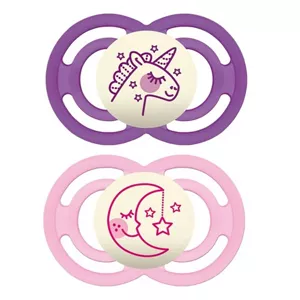
The MAM Perfect Night Pacifier is specially crafted to support healthy oral development and is designed for easy use in the dark. This pacifier, developed in collaboration with dentists, boasts a unique nipple shape that is 60% thinner and 4 times more flexible than other pacifier nipples.
Pros:
- It has a slender and supple nipple design
- The pacifier incorporates a glow-in-the-dark feature
- Designed with your baby’s dental health and comfort in mind
- Available in a variety of attractive designs and sizes
Cons:
- It is not suitable for all infants, as individual preferences for pacifiers can vary
8. Nuk Genius Silicone Baby Pacifier
![]()
Best Orthodontic Baby Pacifier
The NUK Genius Silicone Baby Pacifier stands out as a top choice among parents seeking a gentle and tooth-friendly pacifier for their little ones. It actively encourages healthy oral development in babies. The innovative NUK air system vent plays a crucial role in maintaining adequate airflow through the nipple.
Pros:
- Supports Improved Oral Development
- Exceptionally Soft and Thin
- Slim Design Eases Pressure on Baby’s Jaw and Teeth, Aiding in the Prevention of Teeth Misalignment
- Ideal for Breastfed Infants
Cons:
- Difficult to sterilize
9. Philips Avent Soothie Pacifier
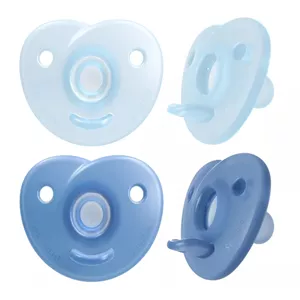
Best Overall Baby Pacifier
The Philips Avent Soothie Pacifier stands as a well-regarded brand of pacifier, widely recognized for its seamless, one-piece design crafted from silicone. Its primary purpose lies in providing comfort and solace to infants while ensuring the natural progression of oral development, including the growth of teeth and gums.
Pros:
- Single-piece construction
- Trusted by healthcare professionals
- Complies with American Academy of Pediatrics guidelines
- Proven effective for most babies
- Hospital-grade, toxin-free material
- Easy maintenance
Cons:
- Nipple confusion
- Hard habit in breaking the use of pacifier
10. Pigeon Fun Friends Silicon Baby Pacifier
![]()
The Pigeon Fun Friends Silicon Baby Pacifier offers a gentle solution for your baby’s comfort, designed to prevent skin marks around the mouth. This pacifier excels in four key design aspects, making it easy to suck on and hold. Its nipple shape encourages natural tongue movement, boasting a wide print surface for an adorable appearance. Crafted from soft silicone, it perfectly fits your baby’s mouth without affecting tooth alignment.
Pros:
- Suitable for infants aged 0 to 3 months
- Features a breathable design with large ventilation holes
- Convenient disinfection options include boiling, microwave, and chemical solutions
Cons:
- Overusing of pacifier can lead to dependency
11. Razbaby Raz-Berry Silicone Teether Baby Pacifier
![]()
Best Baby Pacifier for Teething Babies
The RaZbaby RaZ-Berry Silicone Teether is a gentle and versatile teething toy crafted to comfort infants with tender gums. This teether is crafted entirely from safe, food-grade silicone, ensuring it’s free from harmful materials like BPA. Its design is hands-free, which empowers babies to use it without assistance. Moreover, it comes in a range of vibrant colors.
Pros:
- Gentle and pliable
- Features a variety of textures, including patented BerryBumps
- Easy to clean
Cons:
- The effectiveness of the RaZ-Berry teether can vary from one baby to another
12. The First Years GumDrop Baby Pacifier
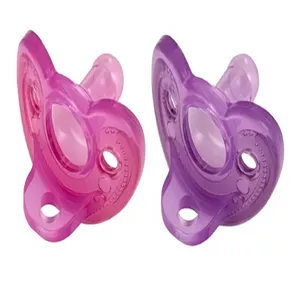
The First Years GumDrop Baby Pacifier is a silicone pacifier specially crafted to provide a comfortable fit for a baby’s face, ensuring their nose remains uncovered. This pacifier is tailored for infants aged up to 3 months.
Pros:
- Unique and Thoughtful Design
- Crafted from Latex-Free Silicone
- Available in Vibrant Colors
- Sold in Packs of Two
Cons:
- Designed exclusively for newborns up to 3 months old
- Some parents may not prefer the bright color options of the pacifier
13. Tommee Tippee Breast-Like Baby Pacifier
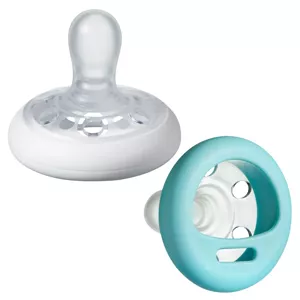
Best Baby Pacifier for Newborns
The Tommee Tippee Breast-Like Baby Pacifier is a favored option among parents seeking a pacifier that closely mimics the touch and shape of a mother’s breast. Crafted from ultra-soft silicone, this pacifier replicates the natural skin-like feel, making it less likely for babies to get confused during breastfeeding.
Pros:
- Simple to clean
- Nipples possess anti-static properties
- The soft silicone nipples provides a realistic sensation
Cons:
- Not all babies prefer the symmetrical design
Different Types of Baby Pacifiers
Baby pacifiers come in several types and styles, each designed to cater to different preferences and needs. Here are some common types of baby pacifiers:
Orthodontic Pacifiers
Orthodontic pacifiers are designed to support proper oral development. They have a flattened nipple shape that resembles a mother’s breast during breastfeeding. These pacifiers are thought to reduce the risk of dental issues and encourage healthy jaw and teeth development.
Traditional Round Pacifiers
Traditional round pacifiers have a circular, bulbous-shaped nipple. They are a classic choice and may be preferred by some babies who find them more comfortable.
Butterfly or Winged Pacifiers
These pacifiers have a butterfly or winged-shaped shield that rests against the baby’s face. The design is intended to prevent the pacifier from covering too much of the baby’s nose, making it easier for them to breathe.
Cherry-Shaped Pacifiers
Cherry-shaped pacifiers have a rounded, cherry-like nipple. Some babies may find this shape more appealing, but it’s essential to choose the right size to prevent choking hazards.
One-Piece Pacifiers
One-piece pacifiers have the nipple and shield molded from a single piece of material. They often have fewer parts, making them easier to clean and maintain.
Two-Piece Pacifiers
Two-piece pacifiers have a separate nipple and shield. While they may require more maintenance and cleaning, they offer flexibility in terms of customization and replacement of parts.
Glow-in-the-Dark Pacifiers
These pacifiers have special features that make them glow in the dark. This can be useful for locating the pacifier during nighttime without disturbing the baby.
Natural Rubber Pacifiers
Some pacifiers are made from natural rubber, which is biodegradable and eco-friendly. They are often preferred by parents looking for sustainable options.
Silicone Pacifiers
Silicone pacifiers are known for their durability and ease of cleaning. They are resistant to odors and stains, making them a popular choice among parents.
Colored and Decorative Pacifiers
Many pacifiers come in various colors and may have decorative designs or patterns. These options allow parents to choose pacifiers that suit their style or match their baby’s accessories.
Sensitive Skin Pacifiers
Pacifiers designed for babies with sensitive skin may have special materials or coatings to reduce the risk of skin irritation or allergies.
Textured Pacifiers
Some pacifiers have textured or contoured nipples, which can provide additional comfort and stimulation for babies who enjoy sucking on textured surfaces.
Benefits of Using Baby Pacifiers in the Philippines
Baby pacifiers are small, nipple-shaped devices designed to provide comfort and soothing to infants. In the Philippines, as in many parts of the world, these pacifiers offer several advantages for both babies and parents. Let’s delve into the benefits of using baby pacifiers in the Philippines:
Comfort and oothing
Babies in the Philippines, like anywhere else, have a natural instinct to suck for comfort. Pacifiers provide them with a soothing sensation that can help them relax and feel secure. This can be especially helpful during moments of fussiness or when trying to calm a crying baby.
Reduced Crying
One of the most significant benefits of baby pacifiers is their ability to reduce excessive crying in infants. The gentle sucking action required to use a pacifier can distract a baby from their discomfort and provide a sense of relief, which often leads to less crying.
Potential Sleep Aid
Many parents in the Philippines find that using pacifiers can help their babies sleep more soundly. The act of sucking on a pacifier can serve as a comforting sleep aid, helping babies fall asleep and stay asleep for longer periods, which can be a relief for sleep-deprived parents.
Dental Health Considerations
Contrary to some misconceptions, pacifiers can contribute positively to dental health when used correctly. They satisfy a baby’s natural urge to suck without causing harm to emerging teeth. In the Philippines, this is important information for parents concerned about their child’s oral development.
Convenience
Pacifiers are readily available in the Philippines, making them a convenient tool for soothing a fussy baby, whether you’re at home or on the go. Their small size and portability make them easy to carry and use whenever needed.
Weaning Tool
Pacifiers can also serve as helpful tools when it comes time to wean a baby from breastfeeding or bottle-feeding. They provide babies with a familiar comfort object during this transition period.
Reduced Thumb-Sucking
If given the choice between thumb-sucking and using a pacifier, many parents prefer the latter. Pacifiers are easier to control and clean than a baby’s thumb, reducing the risk of infection or dental problems associated with prolonged thumb-sucking.
Factors to Consider in Choosing the Best Baby Pacifier
Selecting the right pacifier for your baby is an important decision. Here are several factors to consider when making your choice:
Age and Developmental Stage
Choose a pacifier that is suitable for your baby’s age and developmental stage. In the Philippines, pacifiers are often categorized by age groups to ensure a proper fit and comfort for your little one.
Material
Pacifiers come in different materials, with the most common options being silicone and latex. Silicone pacifiers are durable, easy to clean, and resistant to odors and stains. Latex pacifiers are softer but may wear out more quickly. Consider your baby’s potential allergies and preferences when selecting the material.
Shape and Size
Pacifiers come in various shapes, including orthodontic and traditional round shapes. Orthodontic pacifiers are designed to support proper oral development, while round ones are more basic in design. The size of the pacifier should be appropriate for your baby’s mouth, with a shield that is neither too big nor too small.
Safety Features
Ensure that the pacifier has safety features, such as ventilation holes in the shield to allow air circulation and reduce the risk of skin irritation. The shield should also have a handle or grip for easy removal.
Hygiene and Cleaning
Consider the ease of cleaning and maintenance. Choose a pacifier that is simple to clean and can withstand regular sterilization. Remember that maintaining proper hygiene is essential for your baby’s health.
Brand Reputation
Look for reputable brands that adhere to safety standards and quality control. In the Philippines, trusted brands are often recommended by healthcare professionals and experienced parents.
Allergies
Be aware of potential allergies your baby may have to materials used in pacifiers, especially if you choose latex. Monitor your baby for any signs of skin irritation or allergic reactions.
Shape of Nipple
The shape of the nipple is crucial for your baby’s comfort. Some babies prefer a certain shape, so it may take some trial and error to find the one your baby prefers. Orthodontic pacifiers may be recommended for promoting proper oral development.
Durability
Consider the durability of the pacifier, especially if your baby is prone to biting or chewing on it. Silicone pacifiers tend to be more durable than latex ones.
Availability
Ensure that the chosen pacifier brand and style are readily available in stores in the Philippines. This will make it easier to replace or find additional pacifiers when needed.
Parent Reviews
Read reviews from other parents in the Philippines to get insights into their experiences with different pacifier brands and styles. Real-world feedback can be valuable in making your decision.
How to Clean and Maintain Baby Pacifiers
When it comes to your baby’s health and well-being, proper cleaning and maintenance of their pacifiers are of utmost importance. In this guide, we’ll walk you through the essential steps to ensure your baby’s pacifiers stay clean and safe to use.
1. Cleaning Techniques
To maintain your baby’s pacifiers in pristine condition, follow these easy steps:
- Wash with Warm Soapy Water. Start by washing the pacifier with warm, soapy water. Use a baby bottle brush to reach all the nooks and crannies. Ensure that no soap residue is left behind.
- Rinse Thoroughly. After washing, rinse the pacifier thoroughly with clean water. Any soap residue can leave an unpleasant taste, which your baby may not appreciate.
- Sterilization. Periodically, sterilize the pacifier by boiling it in water for a few minutes. This step helps kill any lingering germs and ensures the pacifier is hygienic.
2. Sterilization Methods
There are different ways to sterilize pacifiers:
- Boiling. Boiling is a common method. Submerge the pacifier in boiling water for about five minutes. Allow it to cool before giving it to your baby.
- Microwave Sterilizers. Microwave sterilizers are convenient and effective. Follow the manufacturer’s instructions for proper usage.
- Sterilizing Tablets or Solutions. Some parents prefer sterilizing tablets or solutions designed for baby products. These are easy to use and effective in killing bacteria.
3. When to Replace a Pacifier
Keep an eye out for signs of wear and tear on your baby’s pacifier. Replace it if you notice any of the following:
- Cracks or splits in the nipple or shield
- Discoloration or changes in texture
- Loose parts that may pose a choking hazard
Regularly inspecting your baby’s pacifier ensures their safety and comfort.
How to Use Baby Pacifier Properly and Safely
Baby pacifiers can be valuable tools for soothing and comforting infants in the Philippines, but their safe and proper use is crucial. Here are some tips to ensure that you use a baby pacifier correctly and safely:
1. Choose the Right Size
Select a pacifier that is appropriate for your baby’s age and developmental stage. In the Philippines, pacifiers are available in various sizes to accommodate different needs. Using the correct size ensures a secure and comfortable fit.
2. Regularly Inspect for Wear and Tear
Check your baby’s pacifier regularly for signs of wear and tear. Look for cracks, holes, or any damage to the nipple or shield. If you notice any issues, replace the pacifier immediately to prevent potential choking hazards.
3. Clean Thoroughly
Maintain proper hygiene by cleaning the pacifier regularly. Use mild soap and warm water to wash it after each use. Rinse it thoroughly to remove any soap residue. Avoid using harsh chemicals or putting the pacifier in your mouth to clean it.
4. Avoid Sweetening
Never dip the pacifier in sugar, honey, or any sweet substance. Sweet substances can lead to tooth decay and other health problems, and honey poses a risk of infant botulism, a rare but severe illness.
5. Use a Pacifier Clip or Holder
If your baby uses a pacifier, attach it securely to a pacifier clip or holder. Ensure that the clip or holder is used according to the manufacturer’s instructions and is not too long to prevent entanglement.
6. Supervise Usage
Always supervise your baby while using a pacifier, especially when they are very young. This ensures that the pacifier remains in the correct position and reduces the risk of choking.
7. Limit Pacifier Use
Avoid excessive pacifier use. Reserve it primarily for sleep times or when your baby needs soothing. Prolonged or constant pacifier use can lead to dependency and potential dental issues.
8. Pacifier-Free Sleep
If your baby uses a pacifier during sleep, ensure that it falls out naturally once they are asleep to reduce the risk of it becoming a suffocation hazard.
9. Gradual Weaning
When it’s time to wean your baby off the pacifier, do so gradually. Sudden removal can cause distress. Start by limiting its use during specific times and offer alternative comfort measures.
10. Monitor for Allergies
Some babies may develop allergies to the materials used in pacifiers, such as latex or silicone. If you notice any signs of an allergic reaction, discontinue pacifier use and consult a healthcare professional.
Popularity and Controversies of Baby Pacifiers
Throughout history, pacifiers have gone through periods of both popularity and controversy. Here are some notable points:
Cultural Variations
The use of pacifiers has varied across cultures. While they are widely accepted and used in many parts of the world, some cultures have frowned upon them due to concerns about dependency or potential dental issues.
Health Benefits and Risks
Pacifiers have been associated with certain health benefits, such as reducing the risk of sudden infant death syndrome (SIDS) when used during sleep. However, prolonged or improper pacifier use can lead to dental problems, including misaligned teeth.
Modern Design
Today’s pacifiers come in various shapes, sizes, and designs. Some are orthodontically designed to support proper oral development, while others are more basic in design.
Personal Insights and Recommendations
As a parent myself, I understand the importance of a pacifier in soothing a fussy baby. Through extensive research, we’ve learned that safety, comfort, and durability are top priorities.
Based on experience, baby pacifiers are very reliable to ease those late-night cries. Remember, trust your instincts and consult with fellow parents for the best fit for your little one.
Baby Pacifiers Frequently Ask Questions (FAQ’s)
What is a baby pacifier, and what is its purpose?
A baby pacifier is a small, soft object that babies can suck on. Its purpose is to provide comfort and soothe babies.
Are pacifiers safe for newborns?
Yes, pacifiers can be safe for newborns when used appropriately. It’s essential to choose the right size and shape and follow safety guidelines.
How can I wean my baby off a pacifier?
Weaning a baby off a pacifier can be a gradual process. Start by limiting its use during specific times and offer comfort in other ways.
Do pacifiers affect breastfeeding?
Using a pacifier can be compatible with breastfeeding if introduced at the right time, usually after breastfeeding is well-established.
Can I use a pacifier to calm my baby at bedtime?
Yes, many parents find that using a pacifier can help calm a baby and promote better sleep at bedtime.
What should I do if my baby refuses a pacifier?
Not all babies take to pacifiers, and that’s perfectly fine. If your baby refuses one, don’t force it.
How often should I clean my baby’s pacifier?
Clean your baby’s pacifier regularly, ideally after each use, to maintain hygiene.
When should I introduce a pacifier to my baby?
It’s usually safe to introduce a pacifier after breastfeeding is established, usually around 3-4 weeks.
Are there any risks associated with using pacifiers?
Prolonged pacifier use can sometimes affect teeth and speech development. It’s best to limit its use as your baby gets older.
Can pacifiers affect my baby’s teeth and speech development?
Extended pacifier use can potentially cause dental problems and affect speech development. Monitor usage as your child grows.
Conclusion
In conclusion, baby pacifiers in the Philippines offer comfort, convenience, and relief for both babies and parents. When used safely and appropriately, they can be a valuable tool in soothing your little one. Remember to choose the right pacifier for your baby’s age, keep it clean, and use it in moderation. With these considerations in mind, you can make the most of this helpful baby accessory.
Written By
With a solid foundation in family dynamics, child development, and a knack for assessing products, our content is built on a strong grasp of our topics. We use trustworthy sources, seek advice from experts, and stay current with the latest happenings in our fields. We always give credit to our sources, reveal any possible conflicts of interest, and deliver info in a truthful and unbiased way. Follow us on Facebook or join our Facebook Group.
Start your journey to confident parenting
Join over 2,000+ parents who receive free practical advice and tips from Joyful PH. Unsubscribe anytime.
You may also like
11 Best Baby High Chairs in the Philippines
In the Philippines, where family meals are a cherished tradition, finding the…
11 Best Nursing Pillows in the Philippines
When it comes to nursing pillows, finding the perfect one can make a world of…
13 Best Baby Bouncers in the Philippines
The journey of baby bouncers in the Philippines is a fascinating evolution that…
13 Best Baby Toothbrushes in the Philippines
Getting the right toothbrush for your baby is essential for their oral health.…
11 Best Baby Monitors in the Philippines
Baby monitors have become a crucial tool for parents in the Philippines,…
13 Best Baby Carriers in the Philippines
When it comes to caring for your baby, choosing the right baby carrier is of…


